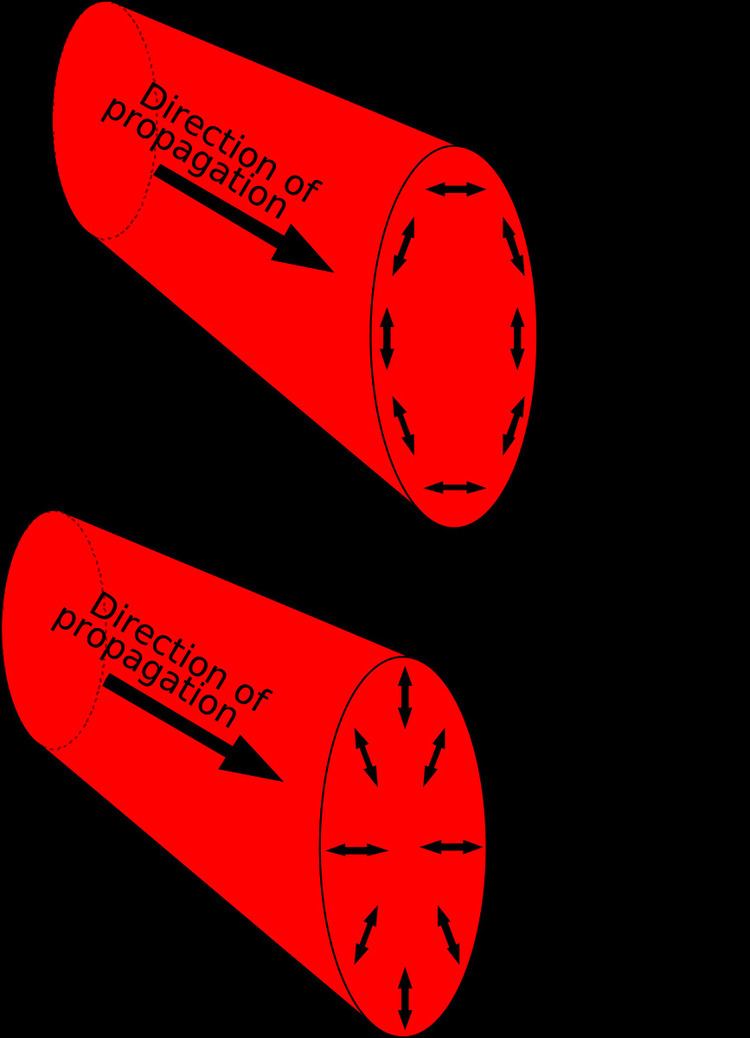 | ||
A beam of light has radial polarization if at every position in the beam the polarization (electric field) vector points towards the centre of the beam. In practice, an array of waveplates may be used to provide an approximation to a radially polarized beam. In this case the beam is divided into segments (eight, for example), and the average polarization vector of each segment is directed towards the beam centre.
Radial polarization can be produced in a variety of ways. It is possible to use a liquid crystal device to convert the polarization of a beam to a radial state, or a radially polarized beam can be produced by a laser in which the Brewster window is replaced by a cone at Brewster's angle. A related concept is azimuthal polarisation, in which the polarisation vector is tangential to the beam. If a laser is focused along the optic axis of a birefringent material, the radial and azimuthal polarizations focus at different planes. A spatial filter can be used to select the polarization of interest
A radially polarized beam can be used to produce a smaller focused spot than a more conventional linearly or circularly polarized beam, and has uses in optical trapping.
It has been shown that a radially polarized beam can be used to increase the information capacity of free space optical communication via mode division multiplexing, and radial polarization can "self-heal" when obstructed.
